Product Certification
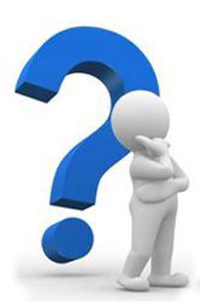
Product certification or product qualification is the process of certifying that a certain product has passed performance tests and quality assurance tests, and meets qualification criteria stipulated in contracts, regulations, or specifications (typically called "certification schemes" in the product certification industry).
Most product certification bodies (or product certifiers) are accredited to ISO/IEC Guide 65:1996 an international standard for ensuring competence in those organizations performing product certifications. The organizations which perform this accreditation are called Accreditation Bodies, and they themselves are assessed by international peers against the ISO 17011 standard. Accreditation bodies which participate in the International Accreditation Forum (IAF) Multilateral Agreement (MLA) also ensure that these accredited Product Certifiers meet additional requirements set forth in "IAF GD5:2006 - IAF Guidance on the Application of ISO/IEC Guide 65:1996".
Examples of some certification schemes include the Safety Equipment Institute for protective headgear, the U.S. Federal Communications Commission (FCC) Telecommunication Certification Body (TCB) program for radio communication devices, the U.S. Environmental Protection Agency Energy Star program, the International Commission on the Rules for the Approval of Electrical Equipment Product Safety Certification Body Scheme (IEECE CB Scheme), and the Greenguard Environmental Institute Indoor Air Quality program. Certification schemes are typically written to include both the performance test methods that the product must be tested to, and the criteria which the product must meet to become Certified.
ENERGY STAR
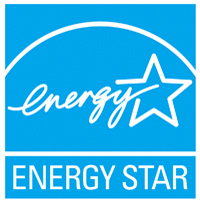
Energy Star is an international standard for energy efficient consumer products originated in the United States. It was created in 1992 by the Environmental Protection Agency and the Department of Energy. Since then, Australia, Canada, Japan, New Zealand, Taiwan and the European Union have adopted the program. Devices carrying the Energy Star service mark, such as computer products and peripherals, kitchen appliances, buildings and other products, generally use 20–30% less energy than required by federal standards. In the United States, the Energy Star label is also shown on Energy Guide appliance label of qualifying products.
RoHS
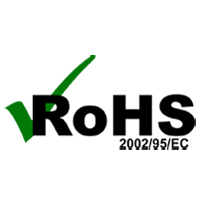
The Restriction of Hazardous Substances Directive 2002/95/EC , (RoHS 1), short for Directive on the restriction of the use of certain hazardous substances in electrical and electronic equipment, was adopted in February 2003 by the European Union.
The RoHS 1 directive took effect on 1 July 2006, and is required to be enforced and become law in each member state. This directive restricts (with exceptions) the use of six hazardous materials in the manufacture of various types of electronic and electrical equipment. It is closely linked with the Waste Electrical and Electronic Equipment Directive (WEEE) 2002/96/EC which sets collection, recycling and recovery targets for electrical goods and is part of a legislative initiative to solve the problem of huge amounts of toxic e-waste.
ISO 14000
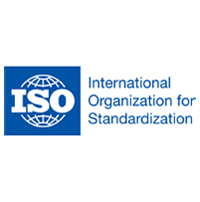
ISO 14000 is a family of standards related to environmental management that exists to help organizations (a) minimize how their operations (processes, etc.) negatively affect the environment (i.e., cause adverse changes to air, water, or land); (b) comply with applicable laws, regulations, and other environmentally oriented requirements, and (c) continually improve in the above.
ISO 14000 is similar to ISO 9000 quality management in that both pertain to the process of how a product is produced, rather than to the product itself. As with ISO 9000, certification is performed by third-party organizations rather than being awarded by ISO directly. The ISO 19011 audit standard applies when auditing for both 9000 and 14000 compliance at once.
The requirements of ISO 14001 are an integral part of the European Union‘s Eco-Management and Audit Scheme (EMAS). EMAS‘s structure and material requirements are more demanding, mainly concerning performance improvement, legal compliance, and reporting duties.
CEC

China Environmental United Certification Center Co., Ltd (CEC) is an agency of the Ministry of Environment Protection. CEC plays a crucial role in bringing companies to the project, in assigning experts from its staff to become EMAS consultants and verifiers and in bringing the Ministry of Environment Protection to the negotiating table.
VCCI
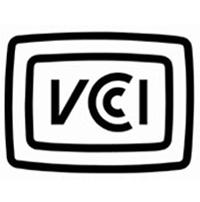
The Voluntary Control Council for Interference by Information Technology Equipment or VCCI is the Japanese body governing RF emissions (i.e. electromagnetic interference) standards.
It was formed in December 1985.
The VCCI mark of conformance also appears on some electrical equipment sold outside Japan.
CCC

The China Compulsory Certificate mark, commonly known as a CCC Mark, is a compulsory safety mark for many products imported, sold or used in the Chinese market. It was implemented on May 1, 2002 and became fully effective on August 1, 2003.
It is the result of the integration of China's two previous compulsory inspection systems, namely "CCIB" (Safety Mark, introduced in 1989 and required for products in 47 product categories) and "CCEE" (also known as "Great Wall" Mark, for electrical commodities in 7 product categories), into a single procedure.
KC Mark
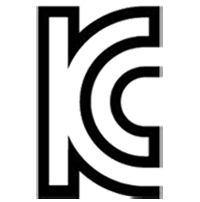
Korea Certification - Mandatory Certification(KC Mark) Manufacturers both local and foreign shall be subject to safety certification (factory inspection & product testing) under control of the safety certification agency prior to distribution or customs clearance of products if they are suspected to cause damage to people, property, or the natural environment due to their structure, materials, or use.
CB

The IECEE is the International Commission on the Rules for the Approval of Electrical Equipment being a standardization body of the International Electrotechnical Commission. The IEC uses the name IECEE for the IECSystem for Conformity Testing and Certification of Electrotechnical Equipment and Components that is better known as the CB System
The IECEE CB Scheme in Geneva is the same as the old CEE - CB Scheme that issued the CEE standards. The CEE had been a European standardisation body founded under the name of Commission internationale de réglementation en vue de l'approbation de l'équipement électrique. A CEE standard defines therefore the Conformité de l'équipement électrique / Certification of Electrotechnical Equipment. Historically this certification process goes back to 1929 based on an initiative by the German VDE (Verband der Elektrotechnik, Elektronik und Informationstechnik).
The IEC CB Scheme is multilateral agreement to allow international certification of electrical and electronic products so that a single certification allows worldwide market access.
The CB scheme has its origin in the CEE (the European "Commission for Conformity Testing of Electrical Equipment") that was merged into the IEC in 1985. Currently there are 52 member bodies organized in the IECEE and 65 NCBs (national certification bodies) support the scheme with 276 CB test labs (CBTL). A product being certified in a CBTL (certified testing laboratory) according to the harmonized standard will receive a CB Report that may be submitted to the national certification bodies like GS, PSE, CCC, NOM, GOST/R, BSMI.
TÜV
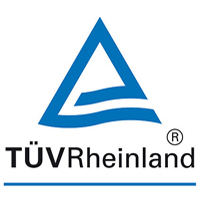
TÜVs (Technischer Überwachungs-Verein, English: Technical Inspection Association) are German organizations that work to validate the safety of products of all kinds to protect humans and the environment against hazards.
As independent consultants, they examine plants, motor vehicles, energy installations, amusement rides, devices and products (e.g. consumer goods) which require monitoring. The many subsidiaries of the TÜVs can also act as project developers for energy and traffic concepts, as problem solvers in environmental protection, and as certification bodies. Many of the TÜV organizations also provide certification for various international standards, such as ISO9001:2008 (quality management system) and ISO/TS16949 (automotive quality management system).
UL Certification
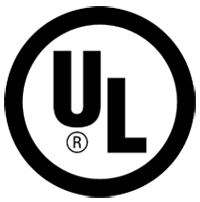
UL (Underwriters Laboratories) is a safety consulting and certification company headquartered in Northbrook, Illinois. It maintains offices in 46 countries. UL was established in 1894 and has participated in the safety analysis of many of the last century's new technologies, most notably the public adoption of electricity and the drafting of safety standards for electrical devices and components.
UL provides safety-related certification, validation, testing, inspection, auditing, advising and training services to a wide range of clients, including manufacturers, retailers, policymakers, regulators, service companies, and consumers.
UL is one of several companies approved to perform safety testing by the US federal agency Occupational Safety and Health Administration (OSHA). OSHA maintains a list of approved testing laboratories, which are known as Nationally Recognized Testing Laboratories.
CSA Certification
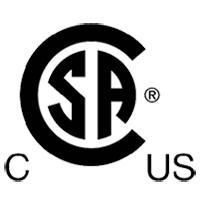
CSA International (Canadian Standards Association), a member of the CSA Group, is a provider of product testing and certification services for electrical, mechanical, plumbing, gas and a variety of other products. Recognized in the U.S., Canada and around the world, CSA’s marks appear on billions of products worldwide.
CSA International certification marks indicate that a product, process or service has been tested to a Canadian or U.S. standard and it meets the requirements of an applicable CSA standard or another recognized document used as a basis for certification.
For consumers, CSA International certification marks are intended to provide increased assurance of quality and safety. For manufacturers, international recognition of the mark may help to ease their entry into North American markets. CSA International certification marks are accepted by many North American regulators and by a large number of North American retailers. Billions of products bearing CSA International certification marks are found on the shelves of well-known retail chains and sold by major product distributors.
CSA International tests products for the North American and International markets against applicable standards including those of the Canadian Standards Association (CSA), Underwriters Laboratories (UL), National Sanitation Foundation (NSF), American National Standards Institute (ANSI) and other agencies.
FCC Certification
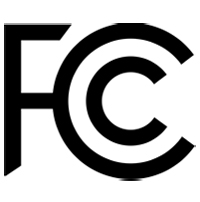
The FCC Declaration of Conformity or the FCC label or the FCC mark is a certification mark employed on electronic products manufactured or sold in the United States which certifies that the electromagnetic interference from the device is under limits approved by the Federal Communications Commission. The FCC label is found even on products sold outside the US territory, because they are either products manufactured in the US and had been exported, or they were manufactured in other nations which have US as a prime market (e.g.: Japan, China). This makes the FCC label recognizable worldwide even to people to whom the name of the agency Federal Communications Commission is not familiar.
The Federal Communications Commission established the regulations on electromagnetic interference under Part 15 of the FCC rules in 1975. After several amendments over the years, these regulations were reconstituted as the Declaration of Conformity and Certification procedures in 1998.
By the regulation, the FCC DoC certification mark is mandatory for devices classified under part 15 (IT equipment like computers, switched-mode power supplies, monitors etc., television receivers, cable system devices, low-power transmitters, un-licensed personal communication devices) and part 18 (industrial, scientific, and medical (ISM) devices that emit RF radiation) of the FCC regulations.
The certification mark is a stand-alone logo (as shown above) for the part 18 class of devices while, for the part 15 class, along with the logo, the label should display other data viz, the trade name of the product, the model number, and information whether the device was tested after assembling, or assembled from tested components.